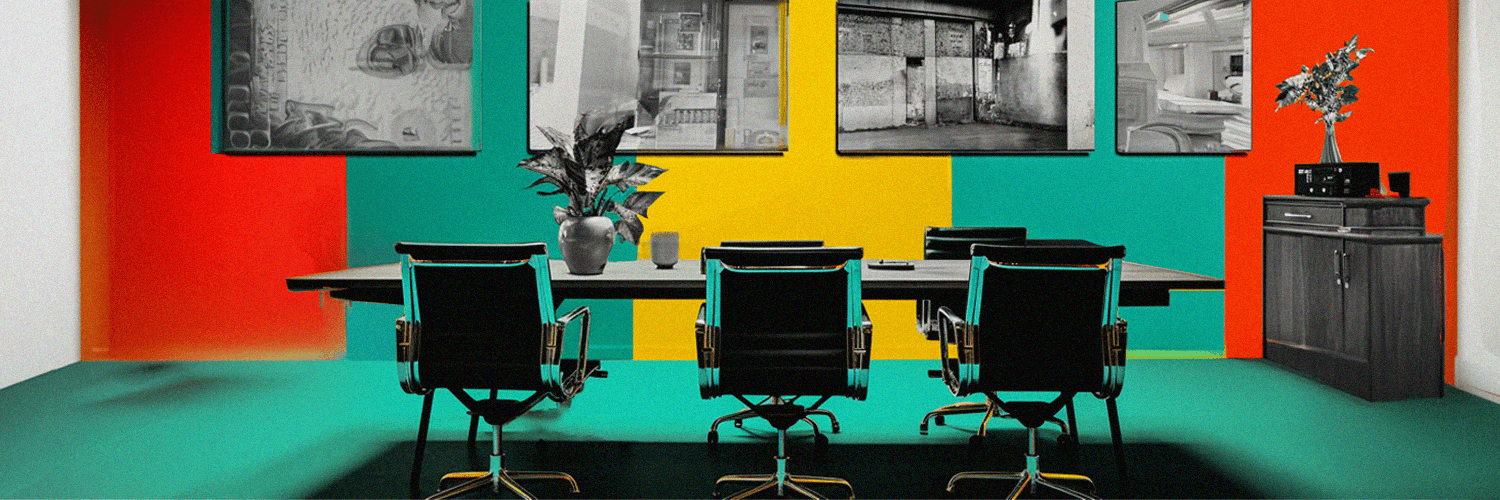Effective communication and collaboration are the cornerstones of success in the fast-paced world of modern business. Central to this dynamic is the conference room, a space where ideas are born, decisions are made, and strategies are forged. Yet, determining the ideal conference room size is often overlooked. Too small, and you risk cramped and uncomfortable meetings; too large, and the space becomes inefficient and costly to maintain.
So, what is the ideal conference room size? Join us as we delve into the factors that influence this crucial decision, exploring the nuances of space planning, technology integration, and the ever-evolving demands of the modern workplace. Whether you're an architect designing a new office space, a manager seeking to optimize meeting room layouts, or simply someone curious about the science of productive collaboration, this exploration of conference room sizing will provide valuable insights to enhance your understanding and decision-making.
TL;DR:
- Different types of conference rooms cater to various corporate needs, from small private rooms for one-on-one discussions to large rooms for presentations and events.
- Small private conference rooms (25-40 square feet) are ideal for small gatherings and offer privacy and technology integration.
- Regular conference rooms (100-200 square feet) are versatile spaces for board meetings, client presentations, and team gatherings.
- Large conference rooms (500+ square feet) are designed for conferences, seminars, galas, and product launches.
- The optimal number of conference rooms per employee is typically one for every 10-20 employees, but it depends on factors like workforce breakdown, meeting types, and office layout.
- Innovative room management solutions like Yarooms complement correctly sized conference rooms by ensuring efficient scheduling and utilization, enhancing productivity, and aligning room size with its intended purpose.
The Importance of Conference Room Size
The right conference room size has a key role to play in encouraging efficient communication and collaboration. How so? For starters, a correctly sized meeting room provides adequate space for attendees to feel comfortable. Imagine trying to brainstorm ideas when you find yourself squeezed elbow-to-elbow with colleagues; discomfort easily distracts from concentration!
Beyond mere comfort, a thoughtfully calculated meeting room size per person brings additional benefits:
- Physical health: A spacious room allows better air circulation, which reduces the risk of spreading airborne illnesses - an especially pertinent concern in our changing world.
- Improved communication: When participants have sufficient personal space, they engage better with each other, fostering stronger team connections.
- Versatility: Finally, different types of meetings often require varied configurations. Training sessions may need extra desk space, while round-table discussions require a central table arrangement.
Establishing the optimal conference room size standards is much more than an exercise in logistics. Instead, see it as an effort designed to boost efficiency within your organization by creating spaces that foster interaction and breed fresh ideas!

How Can a Conference Room's Size Boost Productivity?
The size of a conference room can significantly impact productivity in the workplace. A well-suited conference room size ensures that meetings and collaborative sessions are conducted seamlessly, enhancing productivity. When a conference room is appropriately sized for the number of participants and the purpose of the meeting, it fosters a comfortable and focused atmosphere. It minimizes overcrowding, reduces distractions and discomfort, and allows attendees to concentrate on the agenda. Additionally, adequate space enables technology integration, ensuring that presentations, video conferences, and collaborative tools function smoothly. The flexibility to configure seating arrangements in larger conference rooms according to the meeting's needs promotes engagement and active participation. Ultimately, a thoughtfully sized conference room can transform routine meetings into efficient, productive gatherings where ideas flow, decisions are made, and progress is achieved.
Popular Types of Conference Rooms and Their Sizes
When it comes to conference rooms, one size certainly does not fit all. Different types of meetings require different setups, and that's where the importance of having a variety of conference room sizes comes in handy. From small private spaces for brainstorming sessions to expansive areas suitable for larger assemblies, each type possesses unique perks that cater to diverse corporate needs.
Small Private Conference Rooms (25-40 Square Feet)
Small private conference rooms, typically ranging from 25 to 40 square feet in size, play a unique and indispensable role in today's office environments. These compact meeting spaces are designed to accommodate small gatherings, one-on-one discussions, and quick collaborative sessions. While they may be modest in size, their functionality and design are optimized for efficiency and privacy.
Sizing and Layout
- Square footage: Small private conference rooms are typically between 25 to 40 square feet. This limited space requires thoughtful utilization to ensure that every square inch is maximized for productivity.
- Seating capacity: These rooms are ideally suited for 2 to 4 individuals.
- Furniture: The layout of small private conference rooms usually includes a small table and a few chairs. The table may have built-in power outlets and data ports for easy connectivity. The chairs are often comfortable but space-saving, and they may be positioned around the table or against the walls, depending on the room's design.
Features and Considerations
- Privacy: Privacy is paramount in small private conference rooms. They are typically equipped with soundproofing materials to minimize external distractions and maintain confidentiality during discussions.
- Technology: Even in these smaller spaces, technology plays a vital role. Conference rooms of this size may feature a display screen or a video conferencing system for sharing presentations or collaborating with remote colleagues.
- Lighting: Adequate lighting is crucial for creating a conducive atmosphere. Adjustable lighting fixtures are often used to cater to various meeting needs, from focused discussions to video presentations.
- Acoustics: Given the compact size, acoustics are carefully considered to prevent sound from echoing within the room. Acoustic panels or wall treatments help maintain clear and confidential conversations.
- Furniture flexibility: Some small private conference rooms may incorporate flexible furniture options, such as folding tables and stackable chairs, to optimize space when not in use.
Use Cases
- One-on-one meetings: Perfect for manager-employee discussions, job interviews, or confidential conversations.
- Video conferencing: Equipped with technology, they facilitate video meetings with remote team members or clients.
- Ad Hoc collaborations: Teams can quickly gather for impromptu brainstorming sessions or problem-solving meetings.
- Phone calls: Employees can use these rooms for phone calls, minimizing disturbances in open workspaces.
- Focus work: Occasionally, individuals may use these rooms as quiet, distraction-free spaces to focus on tasks.
.png?width=928&height=523&name=Blog%20posts%20photo%20(3).png)
Regular Conference Rooms (100 - 200 Square Feet)
Regular conference rooms, typically ranging from 100 to 200 square feet in size, are the workhorses of office environments. These rooms are designed to host various meetings, presentations, and collaborative sessions, offering more space and versatility than their smaller counterparts.
Sizing and Layout
- Square footage: Regular conference rooms typically occupy a floor area between 100 to 200 square feet, providing ample space for various seating arrangements and equipment.
- Seating capacity: These rooms can comfortably accommodate 6 to 12 individuals, depending on the layout.
- Furniture: These rooms feature a larger table, often with integrated power outlets and connectivity options, surrounded by chairs. The layout can be configured in different ways, such as boardroom-style, theater-style, or U-shaped, to suit various meeting types.
Features and Considerations
- Technology: Regular conference rooms are typically equipped with advanced technology, including large displays or projectors, video conferencing systems, and managed using meeting room booking software.
- Furniture comfort: The chairs and tables in regular conference rooms are designed for comfort during longer meetings. Ergonomics and adjustability are essential considerations to ensure participants stay engaged.
- Lighting: Adequate and adjustable lighting is essential for creating a conducive meeting environment. Natural light, when available, is often maximized to create a more comfortable atmosphere.
- Acoustics: Soundproofing and acoustic treatment are critical to minimize outside noise and ensure clear audio during meetings
- Storage: Some regular conference rooms may include storage solutions like cabinets or credenzas for storing meeting materials and equipment.
Use Cases
- Board meetings: These rooms are suitable for executive and board meetings where decision-making and strategy discussions occur.
- Client meetings: Regular conference rooms provide a professional setting for client presentations and negotiations.
- Team meetings: Teams can gather here for project updates, planning sessions, and collaborative work.
- Training and workshops: The space with flexible seating arrangements is often used for training sessions and seminars.
- Hybrid meetings: With their technology setup, these rooms are ideal for hybrid meetings with remote teams or clients.
- Presentations and seminars: The larger size allows for audience seating and audio-visual presentations.
.png?width=928&height=523&name=Blog%20post%20photos%202%20(10).png)
Large Conference Rooms (500+ Square Feet)
Large conference rooms spanning 500 square feet or more are the grand venues of corporate gatherings and events. These expansive spaces accommodate large groups, facilitate immersive presentations, and provide a versatile environment for diverse meeting purposes.
Sizing and Layout
- Square footage: Large conference rooms typically encompass 500 square feet or more, offering generous floor space for hosting sizable gatherings and flexible seating arrangements.
- Seating capacity: These rooms can comfortably accommodate 20 to 100 or even more attendees, depending on the seating configuration. The layout can vary from theater-style seating to banquet-style or classroom-style setups.
- Furniture: Large conference rooms are equipped with substantial tables, podiums, and rows of chairs. Furniture arrangements are adjustable to suit the event's specific requirements, whether it's a lecture, panel discussion, or banquet.
Features and Considerations
- Technology: Advanced audio-visual equipment, including large projection screens, high-definition projectors, professional-grade sound systems, and video conferencing capabilities, are essential features of large conference rooms. These technologies ensure that presentations and communications are effective for a large audience.
- Lighting: Lighting in these rooms is often sophisticated, with adjustable fixtures to set the mood or optimize visibility during presentations.
- Acoustics: Acoustic design is crucial to mitigate echoes and maintain sound clarity, especially when the room is at or near full capacity.
- Seating flexibility: Large conference rooms may offer flexible seating arrangements for different event types, from lectures and symposiums to gala dinners and product launches.
- Accessibility: Due to their size, large conference rooms should be designed with accessibility in mind, including provisions for individuals with mobility challenges.
Use Cases
- Conferences and conventions: These rooms are ideal for hosting conferences, conventions, and industry gatherings with keynote speakers, breakout sessions, and exhibitor areas.
- Seminars and workshops: Organizations can hold large-scale training seminars, workshops, and educational events in these spaces.
- Corporate galas and banquets: Large conference rooms can transform into elegant venues for corporate galas, award ceremonies, and banquets.
- Product launches: Companies often use these spaces to unveil new products or services to a broad audience.
- Town hall meetings: For large organizations, these rooms are suitable for town hall meetings and company-wide updates.
- Symposiums and panel discussions: Academic institutions and professional organizations may use large conference rooms for symposiums, panel discussions, and academic presentations.

Optimal Number of Conference Rooms per Employee
Determining the adequate number of conference rooms within an organization is a pivotal aspect when it comes to facilitating seamless operations. Identifying this ideal number revolves around one core metric— the employee count. Having too few meeting spaces can lead to conflict over room bookings and disrupt workflow, whereas having more than necessary can imply unnecessary expenditure and waste valuable square footage.
You should typically aim for one conference room for every 10-20 employees - a threshold that works in most environments. However, it's essential to consider your unique business needs, work schedule, and office culture. Some factors you might want to take into account include:
- Breakdown of your workforce: If many employees frequently hold meetings or several teams work simultaneously on complex projects, you may require additional meeting spaces.
- Nature of meetings: The type of meetings held frequently -brainstorming sessions, departmental reviews, or client calls decide whether you need small individual rooms or larger group-sized rooms.
- Office layout: Open office layouts require more meeting rooms due to the lack of private space, while cubicles offer natural dividers promoting one-on-one interactions.
This methodology isn't foolproof but broadly applies across different industries and team sizes as a rule of thumb.
Also, the trend towards remote or hybrid work models has altered these factors for some organizations - allowing space once dedicated for meeting rooms to be repurposed into other functional areas such as 'hot desk' zones.
Size Matters Settled; Let’s Talk Smart Room Management
Conference room booking solutions like Yarooms seamlessly complement correctly sized conference rooms by ensuring optimal utilization.
These sophisticated systems facilitate efficient scheduling, preventing overcrowding and double bookings, which can disrupt productivity in undersized rooms. Simultaneously, they prevent underutilization in larger spaces, ensuring resources are efficiently allocated. The integration of real-time availability updates and user-friendly interfaces simplifies the booking process, enabling employees to find and reserve the right-sized room for their meetings effortlessly.
With data analytics and reporting capabilities, organizations can fine-tune their room allocation strategies, ultimately creating a more productive and streamlined workspace where the size of each conference room aligns perfectly with its intended purpose.












